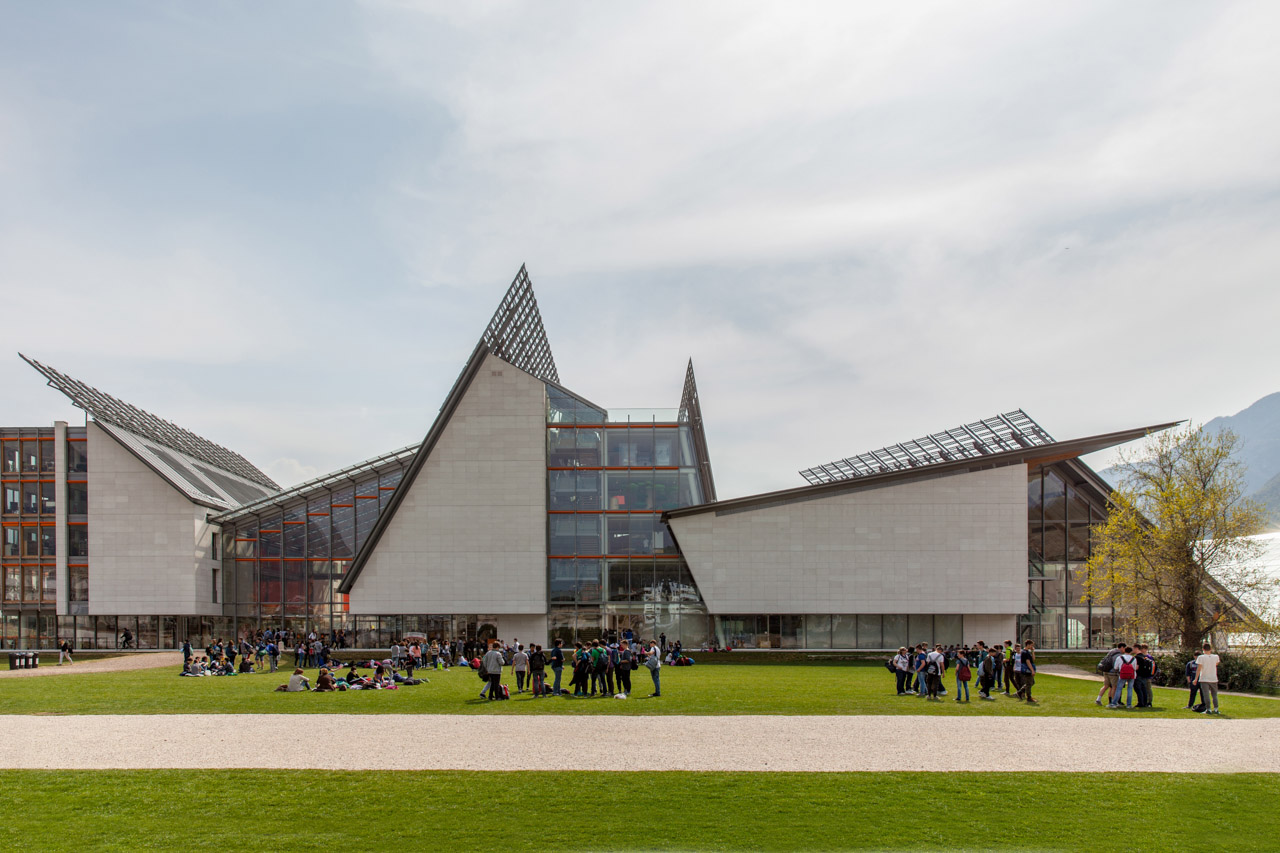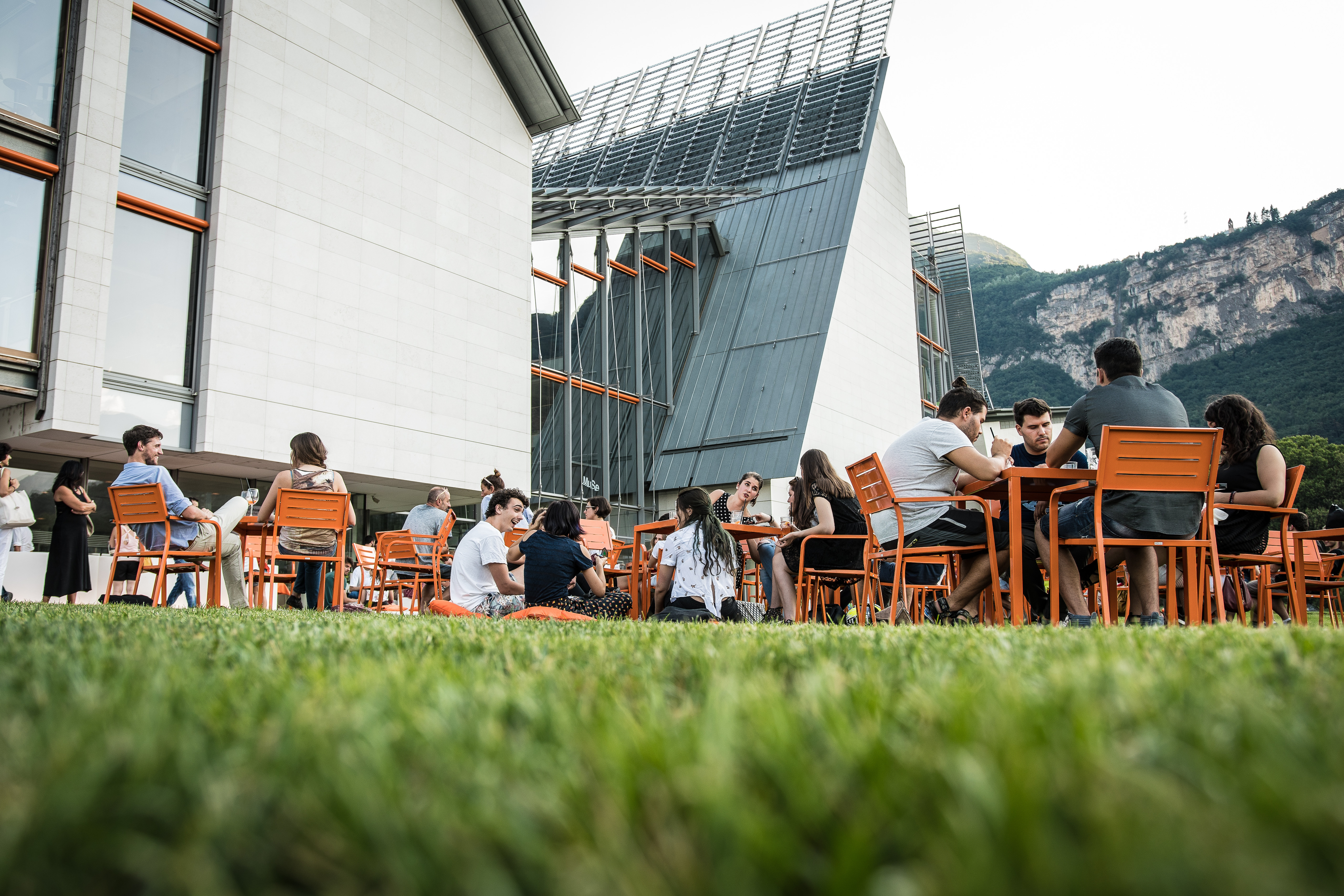


Le musée des sciences de Trente, MUSE, a ouvert ses portes en 2013 dans une zone industrielle requalifiée de la ville de Trente. Le musée, conçu par Renzo Piano, suit les principes de l'éco-durabilité et couvre 12 600 m2 répartis sur six étages et une serre tropicale. Le musée et son architecture présentent la variété mondiale des habitats terrestres, du sommet des montagnes au niveau de la mer, représentée par les forêts tropicales africaines et l'exposition de dinosaures la plus pertinente des Alpes.
Le visiteur s'engage et comprend les conséquences du changement climatique et est exposé à des informations scientifiques et technologiques de manière claire et simple, par le biais de légendes, de matériel audiovisuel et d'effets visuels. C'est un musée qui veut faire la différence et jouer un rôle actif dans le développement de sa communauté ; l'organisation est passée d'activités basées sur la recherche, l'éducation et la communication à de nouvelles façons de relier l'agenda du musée aux objectifs locaux et internationaux de développement durable avec et pour les communautés, les responsables politiques et les décideurs, ainsi que les acteurs économiques publics et privés.
MUSE est au cœur d'un réseau territorial dynamique de musées et de centres d'accueil des visiteurs, dont le Pile Dwelling Museum de Ledro, qui traite de disciplines multiples et de dynamiques locales et mondiales.
La capacité à poser des questions peut être une manière synthétique de définir la recherche, le processus éducatif et, en général, la culture. En se concentrant sur la question et non sur la réponse, MUSE a pu se remettre en question et interagir avec le public. Le musée s'est ouvert à une nouvelle conception urbaine de la ville dans laquelle il est inséré, impliquant les habitants du territoire et interagissant avec des acteurs forts et reconnus de l'économie locale. Il a réussi à construire son propre projet muséologique et muséographique en engageant un dialogue avec la ville.
A côté des activités "classiques" d'exposition, de présentation, d'éducation, les tendances actuelles voient les musées pratiquer de nouveaux modes de fonctionnement qui les relient aux dynamiques de développement des communautés locales, des décideurs et des entreprises.
La relation avec le territoire et le secteur privé ne se limite pas à la notion de "sponsoring", telle qu'elle est généralement comprise. Nous nous sommes concentrés sur la création de relations d'intérêt mutuel : les entreprises cherchent à accroître leurs valeurs, en favorisant le développement, l'innovation, l'emploi et l'image de marque du territoire, autant d'éléments qui sont bien mis en pratique dans un musée. Cette relation a généré de nouveaux langages et de nouvelles relations qui ont été traduits dans des espaces d'exposition, des événements et d'autres collaborations.
Les activités éducatives et de laboratoire, le style d'interprétation et de médiation utilisé pour les diverses initiatives et, plus généralement, les modes de communication des musées ont souvent été intégrés dans le cadre du mentorat, du coaching et de l'autonomisation des entreprises.
Les entreprises ont créé et co-créé des propositions culturelles avec le musée, en appliquant des thèmes d'entreprise qui sont fonctionnels pour le musée.